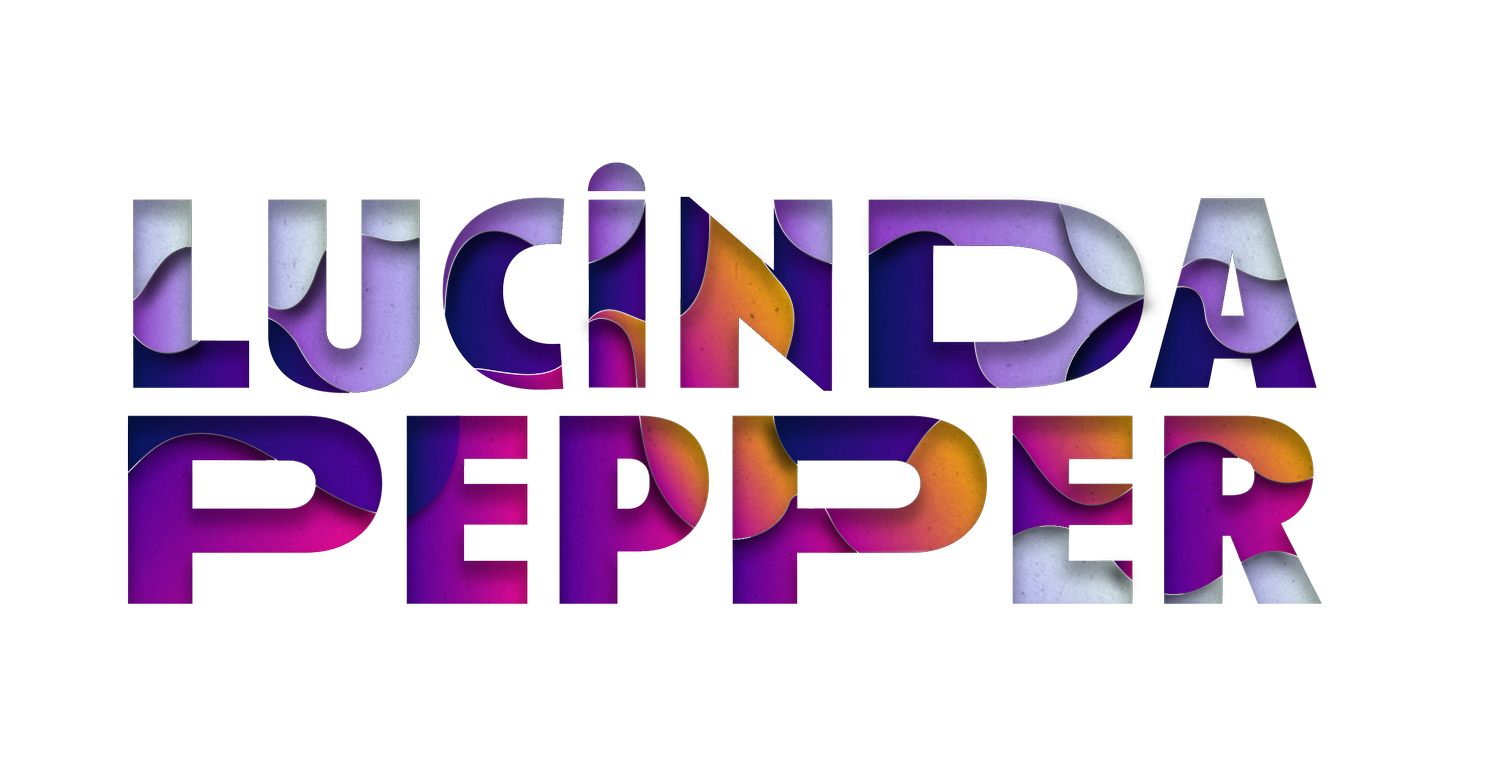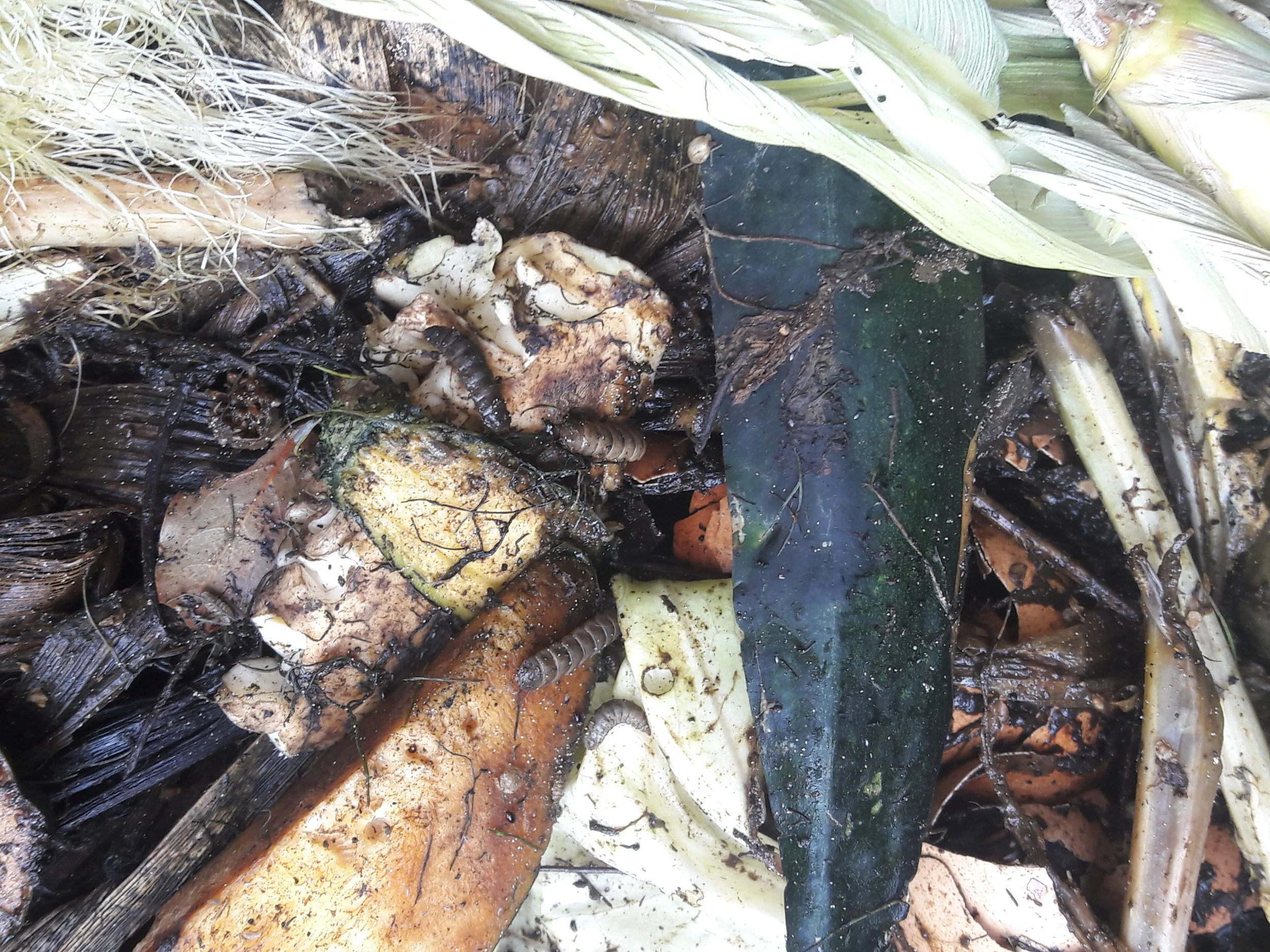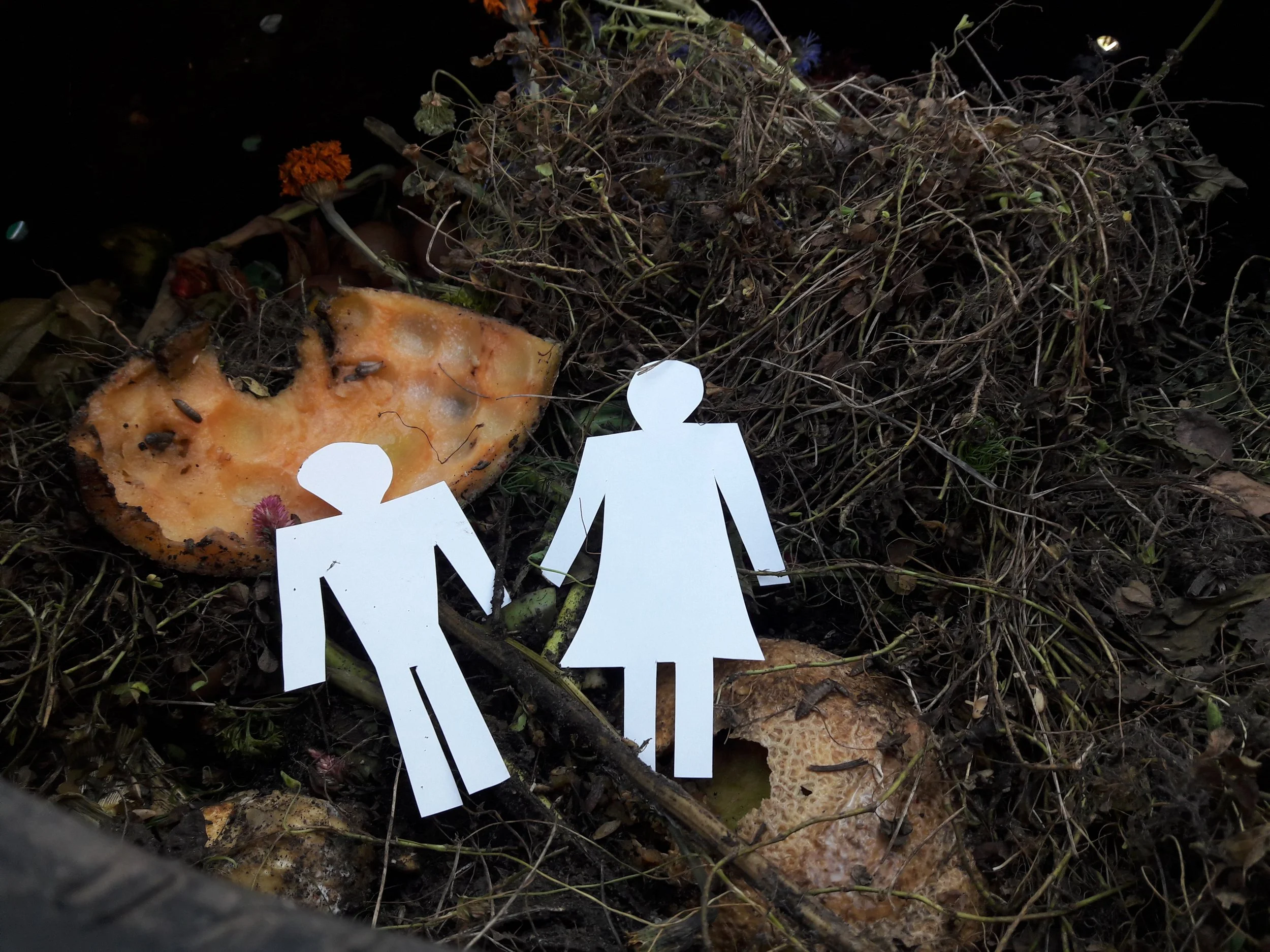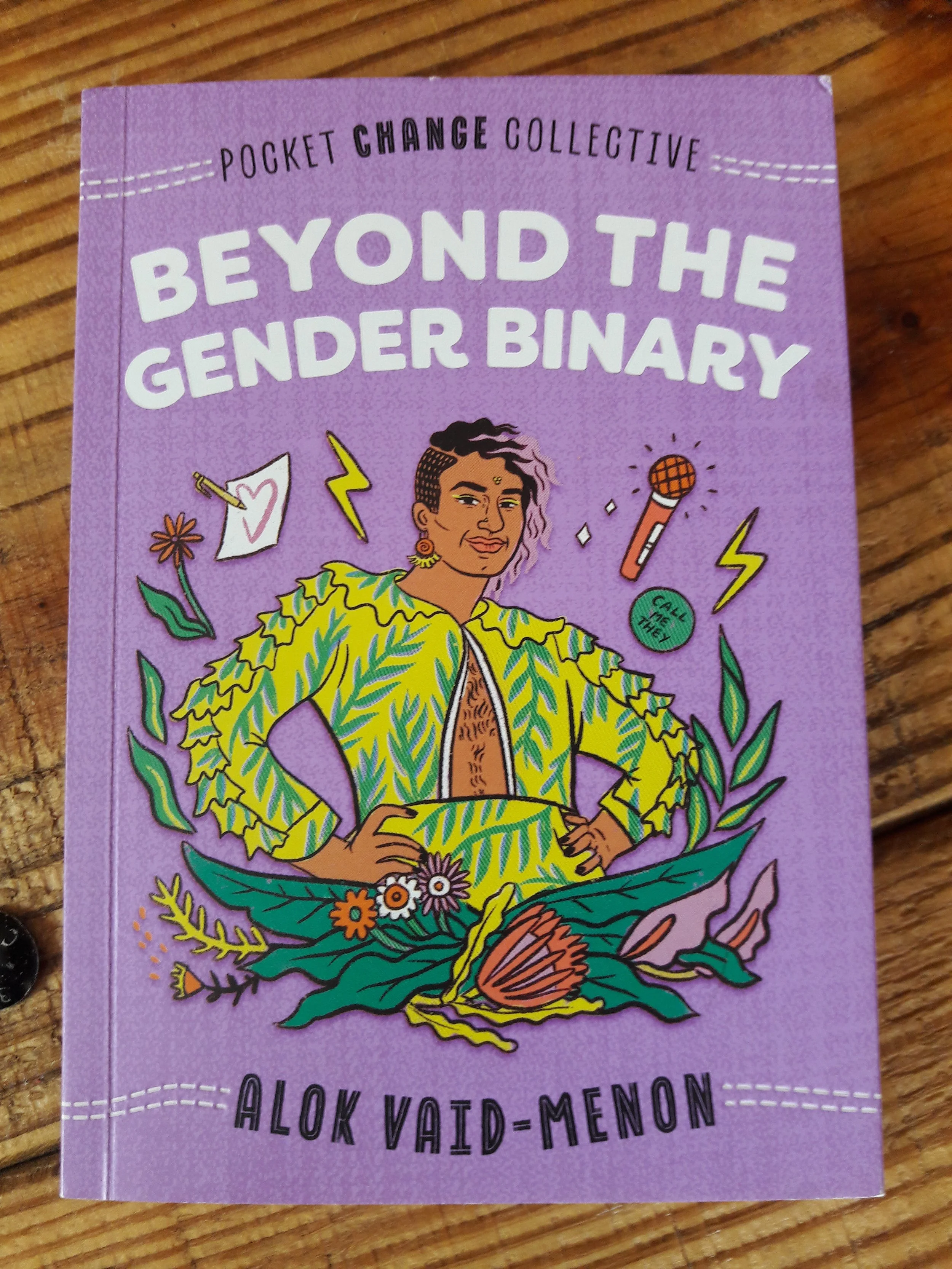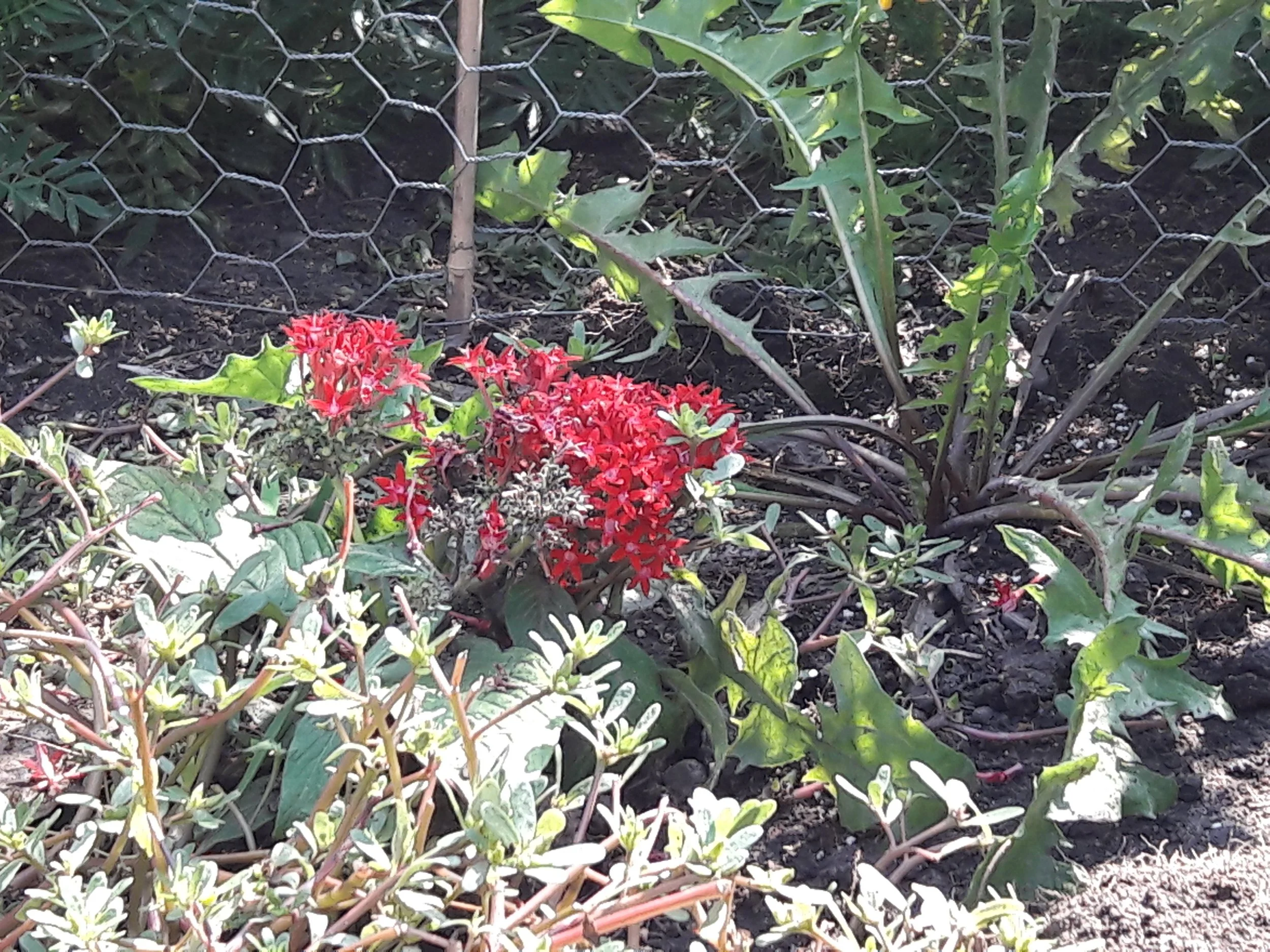Composting The Gender Binary
Recently while working on my book manuscript, I wrote:
Most of the time, though, I have my magnifying glass up close to the compost heap so I can see only a particular fruit of my life that is rotting and causing such a stink. Being that close up creates suffering, as I forget about the purpose of letting go and composting a thing that doesn’t work, a belief constraining me, or a behavior limiting my potential.
My compost heap in action, complete with creatures decomposing the vegetable scraps, egg shells, and organic matter.
Can you identify? Do you need some perspective?
I think it’s part of the human condition to be deeply focused on the granular details of our life. We get tricked by zooming in and over-focusing on our (transitory) feelings, our regretted mistakes (learning opportunities) and our (temporary) grudges. When someone intentionally or carelessly hurts us with their words or actions, we might end up spending a lot of time focused on our pain and processing our feelings.
Sometimes that leads to a breakthrough. But sometimes we exhaust our energies and collapse into a funk, into the muck of the compost heap.
I’m a gardener: I have grown fruit, vegetables and flowers since I was a teenager. This year, I’ve been expanding my definition of food to include weeds- those plants that are not cultivated, but grow in my yard anyhow and are fierce, strong, resilient and immensely wise. They repair the soil and powerfully nourish both the soil and my being.
Some years I have a beautiful garden, some years, disorder and pests take over. Gardening is an ever-changing process that is rich with lessons exemplified in the dynamics of nature. Dirt can support personal and broader revolutions. And all dirt, everywhere, is compost! Soil is literally made up of both living and decomposed organisms, rock, minerals and humus. The byproducts of life and death.
When what has served us is done, when it’s no longer useful or desirable, it’s important to let it compost, ferment, spoil, rot and ultimately fall apart into something unrecognizable and unclaimable. Then (and only then) do we have fertile ground to grow something new, nourishing, supportive and astounding.
An image of my compost heap. Two white paper-cut figures representing the gender binary, similar to those found on restroom signs, are on top.
Let’s compost the gender binary!
It’s overdue, really. It’s been breaking down for years. Sometimes, though, deeply entrenched material takes a long time for those beneficial microorganisms to break down.
Nonbinary writer, performer, public speaker and gift to the world Alok Vaid-Menon (they/them; check them out at ALOK) has long written about the racist, classist, colonialist and white supremacist history of the gender binary. The binary was created as one of the tools intended to make white-skinned people into a superior race and to reinforce many kinds of oppression. A few years ago Alok released a wonderful small book that does big work: Beyond the Gender Binary (Penguin). Their powerful writing offers a vision of a world where a spectrum of gender replaces the currently dominant and very limited two-choice binary system.
Beyond the Gender Binary book cover with a purple cover, a trans-fabulous person illustration - they are dressed in yellow green and black and surrounded by foliage, a lightning bolt, microphone, and pen and paper. The words Alok Vaid-Menon run across the bottom.
In one of the opening shots of episode 3: Can We Say Bye-Bye to the Binary?, part of Getting Curious with Jonathan Van Ness, Jonathan (they/them) is sitting on a purple couch reading Alok’s book Beyond the Gender Binary. For 26 minutes, my emotions cycled through sadness, appreciation, and gratitude as Jonathan and friends dissected why gender nonconformity poses such a threat to white body supremacy and dominant culture (here’s a clip on YouTube).
Seeing elements of my own experience, and of our varied and broad nonbinary / gender nonconforming / transgender community portrayed with genuine respect, delivered with real care and within expansive frameworks and showcased on a major streaming service left me saying wow. This episode is also a gift to our world.
I imagine other folks, especially young folks, kids- who already know that they can’t fit within the boxes of the binary- watching and receiving affirmation that there are people in this world who love them and want to support them, see them as they are, cheer them on, and give them tools. Affirmation like that shows there is heart and space for gender diverse folks to live a genuine life in our culture, which often snuffs out deviation from the mythical norm.
Before I reached my tweenage years I knew I was nonbinary, but I didn’t have that word. I could perceive nuance to my gender, but I didn’t see nuance portrayed anywhere- not in school or in my family. Not on Sesame Street or at church. Since I knew no word to describe me, and I had no context in which I could see myself reflected accurately, I could not describe who I felt myself becoming. (By the way, those terms have been around for a long time.) I locked away this true inner knowing in my heart, a little stone of a secret that I alone could puzzle over.
The only rites of passage related to gender that I was aware of were puberty, periods, body hair, and the most outward, hormone-driven changes of adolescence. I was assigned female at birth, dressed and cared for as a girl, and socialized as a cis-gendered woman (complete with second-gen {Trans-exclusionary} feminist values). Those decades of social training left little room for questioning, dissent or even understanding why I felt like an imposter when I put on makeup and feminine clothing.
In Can We Say Bye-Bye to the Binary?, Joshua Allen (activist in residence at The Center) shared, “...just having never felt like you fit in, and then finally, when you have the language, which comes from seeing people who are like you…I am still learning myself as gender non-conforming and nonbinary, and trying to understand that I don’t need to feel any pressure to be or perform as anything other than myself.”
Whew! That’s aligned with my experience. I first heard the term nonbinary sometime in 2013, and I remember thinking, oh, so that’s the word! I remember feeling grief and gratitude well up at the same time, creating an ache in my chest and throat. In 2013 I was 37 years old, and I had been carrying that little secret stone of knowing about my gender for 29 of those years.
Can We Say Bye-Bye to the Binary? is an excellent resource for folks all across the gender spectrum. From my perspective as a nonbinary viewer, the qualities of love, clarity, joy, and truth-telling in the show lead the way. And it’s a fun episode, including a wonderfully-giddy commercial, a fictionalized short story based on gender reveals, and a reprogramming moment, all which provide lightness while still being completely on-point. The joy of those brief moments is infectious.
I pressed the pause button on the historic photographs and images so I could soak in the meaning of history. The shout-outs to queer Transcestors moved me. So much of the history of our queer and Trans/GNC lives has been (and is still) erased, or has to be hidden away in the hopes that someday political and social realities will support its unveiling. This isn’t dusty history: right now in 2022, remarkable everyday people who just want to be safe and to live, and love as who we are must make daily decisions about gender presentation and its alignment with gender identity so we can navigate the rapidly-changing circumstances that impact our visibility and safety. If you want analytical support for that statement, hit the pause button on the bar graph so you can really take in those stats about the excessive and worrying upward swing in recent anti-trans legislation introduced across the U.S.
The episode included a well-done separation of gender presentation and gender identity. That’s refreshing because people conflate the two all of the time. I appreciated Jonathan’s statement, “You don’t have to dress any sort of way when you’re any type of person. I’m nonbinary, I don’t owe anyone femininity or masculinity. I’m thinking, what makes me feel good?”
Earlier, I mentioned I’m expanding my definition of food to include fierce, resilient weeds. No, I didn’t plant them, but there they are, and because I hold the earth dear and respect the living creatures around me, I have decided to let the weeds expand my mind. I’ve been reading up, doing my research. I’ve learned that certain weeds show up at certain phases of soil remineralization and regeneration. They have specific roles that are important in the replenishment and building of healthy soil. My perspective has shifted. I’ve moved from seeing weeds as invasive and a pain to seeing them as welcome and beneficial companions providing food and medicine, and working toward the same goal I am: healthy chemical-free land that can support an astoundingly diverse array of life.
Red perennial flower Pentas, surrounded by dandelion, purslane, and spotted spurge, excellent soil rehabilitators and medicines- aka “weeds”
What if gender-diverse people are weeds in the gender ecosystem?
Weeds show up when soil is depleted and needs help recovering its richness. Weeds have amazing capacities to send tap roots way deeper than tillers can reach, and draw minerals up into the topsoil. Weeds have lovely foliage and flowers, and create abundant habitat for creatures in and above the soil. Weeds hold massive amounts of health-nourishing vitamins and minerals. Weeds are fierce and will grow even if you don’t give them a spot to grow. They come up in the tiniest cracks of pavement, they create protective living mulch in your garden, they will even eventually populate a toxic wastefield and work their resilient, harmonious magic in returning life to the most barren soil. Weeds don’t need permission to exist.
They do, however, require us all to do some deep work. Can you understand why you ever thought of them as weeds to begin with? Why did you feel these specialized plants are disposable or useless? What conditioning makes you overlook their valuable contributions?
Weeds need you to feel the pain of separation that you were conditioned to believe in, that made you feel you were superior. To feel the disconnection that lied to you about who belongs.
Pain tells us something is wrong
In my young adult years, I identified as a white, feminist, cisgender woman and lesbian. I was experiencing sexism and homophobia that caused me to feel deep pain and rage. Being a member of these groups who were still fighting for legal rights and basic equality felt like a heavy burden. Even within these groups, I didn’t feel a sense of belonging. Trans and gender diverse friends and acquaintances- people that I admired and loved- were being attacked and excluded by the communities I was a part of. My older, more private hurt got stirred up - that I didn’t belong anywhere, that nowhere was safe. The painful experience of knowing that I wasn’t safe, that I didn’t fit in, and that the world doesn’t have boxes and contexts adequate to hold me came bearing a great gift.
Listen: the pain experienced by people who insist there is no gender beyond male and female carries a seed of possibility. Is your soil fertile enough, loose enough, for that seed to take root?
Understanding that we have been acculturated to believe in a construct of gender that functions as a tool for a racist imperialist system to continue gaining traction and dominance is very painful. That realization hurts, and creates a poignant mix of anger, fear, denial, confusion, and betrayal.
Sure, it has been excruciating for me to understand how I don’t fit into these dominant-culture constructs. It was just as excruciating for me to come to understand I was fitting into those constructs without actively making that choice.
We are all more expansive than the limited system of two genders we’ve been trained to follow. Our genders exist as more than legal definitions based on the sex organs of our bodies. Everyone benefits from considering how their own genders have been shaped, influenced, and expressed, and from exploring nuances within their own gender.
What are your pronouns?
Every month the Conscious Style Guide sends me a newsletter full of juicy word news and language tidbits. The August issue contained an article linked from LGBTQNation, a website I hadn’t previously visited, about using gender neutral pronouns.
I view this article as one of those instances where well-meaning people who are trying to help end up perpetuating stereotypes and using problematic constructs. I had to wonder if the author had really considered how their own frameworks were influencing their take on pronouns.
Here I offer an authenticity review and critique of this article, basing my opinions on my understandings, frameworks, and experiences as a nonbinary person.
Informational articles should not pose as the entirety of information on one subject, or be delivered as if they are the voice of a group of people. Those mistakes are one of the sneaky ways that white supremacy and white dominance take over narratives. Pronouns matter. Everyone should have a stake in this conversation. The way this article is written instead exposes its framework of maintaining dominance, control and power over the narrative.
“Here, we explain everything you need to know about gender-neutral pronouns and gender pronouns as a whole, as well as provide a list of pronouns used today.” However, the title of the article, An (Incomplete) List of Gender Pronouns, already told me they aren’t including everything about pronouns. By saying, “everything you need to know,” it’s clear the person writing has determined that what they have to say is all people need to know.
They are therefore assuming the role of dominant LGBTQ culture translator, speaking with a dominant voice on behalf of an entire group of people.
Gender neutral pronoun examples are limited to modern use of they/them. There’s an ableist focus in the early part of the article on the dynamic of an observer possibly unable to tell another person’s gender by sight. The author implies that it’s still okay to use he and she for typically masculine- and feminine-appearing people (for sighted folks). That practice keeps the assumptions of gender and the gender binary alive and well.
Here, the article missed out on helping the reader understand that everyone’s gender is on a spectrum. You cannot know how people identify until you ask them. Nope, sighted people, you can’t know by looking at a person what pronoun they might use.
“This [respecting someone’s pronouns] is particularly important for transgender and non-binary people who may wrestle with gender dysphoria – a feeling of discomfort or distress associated with the mismatch between their sex assigned at birth and gender identity. For these people, being referred to with the correct pronouns can help alleviate that dysphoria, increase their self-esteem, and improve their overall sense of self.”
Way to other people! Ugh. This paragraph is so filled with problematic assumptions, bias, and subconscious language choices that reinforce stereotypes.
Should I start with the use of, “for these people,” which is so excluding, finger-pointing and othering!?
Or with the blanket implication that all people who are trans and nonbinary have gender dysphoria (not true! and besides, experiences of dysphoria themselves are on a spectrum)?
Or would it be better to comment on the insinuation that people who do have dysphoria require others to help them to improve their overall sense of self (by not triggering dysphoria)?!?
“Using people’s correct pronouns – and talking about the importance of doing so – also encourages others to follow suit. This paves the way for more inclusive attitudes towards gender-expansive people.”
Double ugh. Not only gender-expansive people need more inclusive attitudes about gender, EVERYONE does.
People need to be freed from the oppressive, racist, classist, and problematic construct of the gender binary.
People need to understand gender as a spectrum encompassing a vast array of masculine, neutral, and feminine energies and expressions.
All folks, and cisgendered people in particular, need to do the work of examining their gender conditioning, feel the pain of their experiences, examine their own alignment or lack thereof, and practice accepting their own gender expressions, gender presentations, and pronouns.
Doing these things will greatly move the needle toward dismantling the harmful construct of the binary.
I appreciate this: “Most people assume that only LGBTQ people share their gender pronouns. But having a list of pronouns isn’t just an LGBTQ thing. Again, by being open about our own gender pronouns, we can normalize the idea of sharing pronouns. This makes it easier for transgender and gender non-conforming people to share their pronouns with others and helps them feel safe to share their pronouns with you.”
That good stuff about normalizing pronouns still rankles me, because there is still othering and finger pointing of exactly who this practice will help, who it will create safety for, and with whom it will promote connection. It perpetuates the idea that pronouns are for queer and/or gender diverse folks only.
To me, it reads as: normalizing pronoun sharing is for the benefit of presumably cis people who are generous enough to practice using and asking for pronouns.
“...It is best to apologize quickly and avoid making a fuss over the [messing up pronouns] blunder. You don’t want to call attention to the situation or put the other person in an awkward or uncomfortable spot.”
Sure, and there are very good and important reasons for some folks to not have a lot of attention drawn to a blunder of their pronouns. Safety- for one. Misgendering people and misusing pronouns creates actual danger for a lot of folks, not just awkwardness or discomfort. Though, it seems this article isn’t talking about those people.
As a nonbinary person, I’m not reassured by quick apologies. It makes it seem that the person messing up has not taken in the impact of their mistake. I would much rather have someone be genuine and open, take time (away from me and not using my emotional labor) to understand how their “blunder” might impact me and others like me, and then sincerely apologize.
When someone misuses my pronouns, I can no longer trust that I am seen as I am, or that the person is even willing to try seeing me. It’s tiring when someone repeatedly will not get my pronouns right. Watching people default to cultural conditioning is like watching myself become invisible.
Two things I wish people would understand about pronouns: using them is a beautiful responsibility; to understand your own pronouns and use the correct pronouns of others is a matter of great respect.
You don’t need to understand why others use their chosen pronouns, but you need to respect and use their correct pronouns anyhow.
While good-natured in spirit, I can’t ignore that this article erases so many facts that would help readers more deeply comprehend how using gender neutral pronouns, and people’s correct pronouns always, is a tool to dismantle a system that perpetuates harm and exclusion. It misses an opportunity to inspire readers to start doing that work themselves.
Caring for people by dismantling harmful systems is about freedom, joy, and respect.
What questions have you been asking yourself?
Asking ourselves questions and listening to, journaling about or discussing our answers help us to grow and release what no longer serves us, individually and collectively.
Here are a few questions to consider about your gender and the construction of the gender binary:
What gender were you assigned at birth?
What gender did people call you when you were little?
When and how did you come to understand that you “are/were” the gender you were called in childhood?
Have you ever felt identification with a gender other than the gender you were called in childhood?
Who are your role models now that express feminine, masculine, or androdgynous gender presentations? Who were those role models earlier in your life?
What makes your own gender presentation feminine, masculine, or androgynous?
What does feminine energy feel like to you? Masculine? Androgynous?
What images do each of those energies evoke in your imagination?
What are you, or are you not, capable of or allowed to do because you are a certain gender? Has that changed over your lifetime?
What do you find joyful about your gender identity and/or presentation?
Gender is a spectrum - a broad, almost limitless array of identities in every shade between the terminals of masculine and feminine. Even people who ultimately identify as cisgendered will develop new and different ways to relate to gender through their own self-examination. As you consider your gender, perhaps you’ll find you’re ready to compost some of the beliefs and assumptions about gender you were taught by well-meaning people.
DID YOU KNOW? Soil is the only substance that converts death to life.
That rich compost you are creating by allowing what is not true to die will make extra-nourishing soil. In that new foundation, the most beautiful possibilities can grow.
big, big love-
Lucinda
